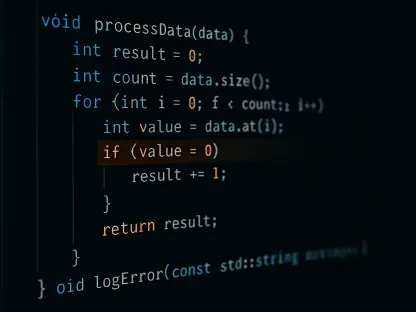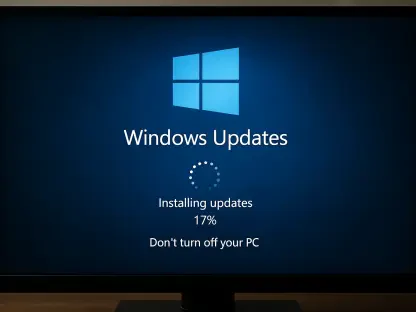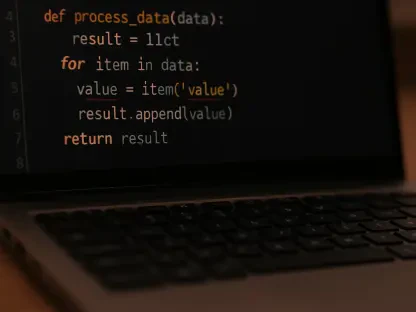The integration of artificial intelligence (AI) in third-party risk management (TPRM) processes has opened up a realm of transformative possibilities. In today’s increasingly interconnected business landscape, where organizations heavily rely on third-party vendors to meet their operational needs, the criticality of robust risk management strategies cannot be underestimated. To navigate through the complexities of strict regulations and various challenges, enterprises must adapt their approaches to effectively mitigate potential risks.
Enter AI—the game-changer. By harnessing the power of artificial intelligence, businesses can revolutionize their TPRM strategies, unlocking a plethora of opportunities while addressing key challenges. Specifically, the integration of AI into due diligence procedures promises substantial enhancements in accuracy, efficiency, and comprehensiveness, elevating risk management efforts to unprecedented levels.
In this article, we delve into the potential of merging due diligence practices with AI technologies, leading to an enhanced TPRM framework. We highlight the manifold of benefits that AI brings to the forefront, emphasizing its ability to streamline due diligence processes, strengthen risk assessment, and bolster decision-making.
The Importance of Due Diligence in TPRM
Due diligence plays a pivotal role in TPRM, serving as a cornerstone for evaluating and selecting vendors. By adopting a risk-focused approach, organizations can effectively assess third-party providers, ensuring secure partnerships and proactively mitigating potential risks.
Inadequate vendor security screening can lead to data breaches, which can disrupt operations, damage customer trust, and bring about substantial regulatory penalties. Therefore, third-party security measures should be comprehensive, efficient, and scalable.
Mitigating Risks and Establishing Secure Partnerships
The primary objective of due diligence in TPRM is risk mitigation and establishing secure partnerships. A comprehensive assessment of potential vendors enables organizations to evaluate their integrity, financial stability, and operational capabilities. Informed decisions, based on thorough due diligence, lead to partnerships with vendors boasting reliable track records and strong compliance standings. This proactive approach reduces the likelihood of disruptions or breaches that could negatively impact operations or reputation.
Ensuring Regulatory Compliance
A fundamental aspect of TPRM revolves around ensuring compliance with legal and regulatory requirements. Meticulous due diligence empowers organizations to conduct detailed evaluations of relevant laws, regulations, and industry standards, identifying potential compliance gaps or violations. Addressing these issues helps companies avoid legal and reputational risks, fostering a culture of trust and accountability in their third-party vendor ecosystem.
Beyond Traditional Assessing Methods: The Need for Comprehensive Evaluation
Considering today’s challenges, relying solely on traditional assessment methods falls short in providing the depth of analysis necessary to navigate the intricacies of third-party risks. It is essential to adopt a comprehensive evaluation methodology that goes beyond conventional practices. A holistic approach to due diligence involves a thorough examination of vendors’ security protocols, regulatory compliance, data protection measures, and overall risk management frameworks.
By placing due diligence at the forefront of vendor evaluation and selection, organizations can proactively identify and address risks, establish secure partnerships, and navigate the complex landscape of TPRM with greater confidence and resilience. On the other hand, overlooking comprehensive evaluation methods can expose companies to unforeseen vulnerabilities. Relying solely on traditional assessment practices may result in a fragmented understanding of third-party risks, hindering the ability to properly identify and mitigate threats.
Addressing the Challenges of Traditional TPRM Approaches
Navigating the intricacies of modern business operations demands a robust and adaptive approach to TPRM. By now, it has become clear that traditional methods may encounter challenges when it comes to comprehensively assessing and mitigating risks from external vendors. Inefficiencies in data analysis, reliance on manual processes, and disjointed systems are just some potential issues.
In this section, we delve into the limitations of conventional TPRM approaches, shedding light on the potential implications for an organization’s security posture and overall operational effectiveness. By recognizing these obstacles, businesses can explore innovative solutions to improve their TPRM endeavors and stay resilient in the face of evolving threats.
Inefficient Data Analysis and Lack of Automation
When it comes to traditional TPRM, inefficiencies in data analysis and reliance on manual processes have been persistent stumbling blocks. The tedious process of reaching out to vendors for responses and the lack of standardized assessment questionnaires hinder the timely procurement of products and services, often causing delays in critical business processes. Furthermore, the disconnect between third-party security programs and procurement exacerbates the situation, leading to potential security gaps.
Navigating Regulatory Demands
Dealing with an increased number of vendors and coping with mounting regulatory demands compounds the challenges faced by organizations. The constantly evolving regulatory environment adds complexity to TPRM, requiring businesses to comply with a variety of industry-specific regulations. The lack of automation in traditional procurement amplifies the burden of regulatory adherence, making it difficult for organizations to pace with changing requirements.
Improper Risk Mitigation
Inadequate risk mitigation is becoming an increasingly significant challenge in traditional TPRM. This exposes businesses to vulnerabilities and leads to suboptimal risk management outcomes. Without the integration of automated solutions, organizations struggle to properly tackle emerging threats, which leaves them vulnerable to cyberattacks, data breaches, and reputational damage.
The Compelling Need for a Comprehensive and Proactive Approach
Amidst emerging privacy regulations and an evolving threat landscape, companies are compelled to adopt a more comprehensive and proactive approach to third-party security. Standardization becomes a priority as industries strive for scalability, agility, and adaptability in TPRM, supporting business growth while upholding robust security measures. Furthermore, global regulators, customers, and business partners demand stringent risk management programs, driving the necessity for increased automation.
A Path to Overcoming Challenges
To effectively address the limitations of traditional TPRM approaches, organizations are turning to automated solutions. AI technology presents a transformative path, empowering TPRM with accelerated processes, enhanced visibility, and an expanded scope of cybersecurity initiatives. By incorporating automation, businesses can proactively identify, assess, and mitigate risks, enabling timely responses to emerging threats.
With the power of AI, organizations gain a competitive edge by efficiently managing their vendor ecosystem and ensuring comprehensive risk coverage. In the following section, we delve deeper into the transformative impact of AI on TPRM, exploring the benefits it offers and how businesses can harness its potential to elevate their risk management and enhance overall security posture.
The Benefits of AI Integration in TPRM
Incorporating AI in TPRM revolutionizes risk management practices, empowering organizations to proactively address threats, optimize resources, and make well-informed decisions. Automation offers a viable solution to time-consuming manual tasks, facilitating seamless interactions with vendors, and streamlining processes.
As businesses navigate the complex third-party landscape, AI integration emerges as a strategic imperative, driving the growth and resilience needed to thrive in today’s competitive environment. Let’s further explore the benefits of AI integration in TPRM.
Enhanced Risk Detection and Mitigation
AI systems can continuously monitor vast amounts of data from third-party vendors, quickly detecting anomalies, patterns, and potential vulnerabilities. Leveraging machine learning algorithms, these systems analyze and assess complex risk indicators, enabling timely and informed threat mitigation actions. The ability to swiftly identify emerging threats allows organizations to take proactive measures, minimizing the potential impact of breaches or data compromises.
Efficiency and Resource Optimization
AI integration optimizes resource allocation and enhances operational efficiency. Through the automation of repetitive tasks, TPRM teams can redirect their efforts toward higher value-added activities, such as conducting thorough risk assessments, developing mitigation plans, and cultivating strategic vendor partnerships. With AI-powered systems streamlining data management and reporting, the risk of errors is minimized, and adherence to internal policies and regulatory requirements is ensured.
Actionable Insights and Informed Decision-Making
AI algorithms identify patterns, trends, and correlations within third-party data, providing organizations with actionable insights that facilitate informed decision-making. Comprehensive risk assessments based on AI-powered analytics offer a deeper understanding of the threat landscape, strengthening vendor relationships and streamlining strategic evaluations.
Streamlined Compliance and Due Diligence Processes
Integrating AI technology with TPRM simplifies compliance and due diligence processes, offering unmatched efficiency and accuracy. The automation of lower-value and repetitive tasks reduces operational costs and frees up valuable resources. Additionally, AI’s rapid data processing capabilities enable better analysis of vendor data, compliance with regulatory requirements, and evaluation of contractual agreements, ensuring a comprehensive and consistent approach to compliance and due diligence.
Enhancing TPRM with AI: Elevating Due Diligence to New Heights
The incorporation of AI into TPRM practices introduces a wide array of possibilities for enhancing the due diligence process. AI-driven solutions elevate the effectiveness and efficiency of due diligence, enabling organizations to make wise decisions and establish secure vendor partnerships.
Risk Identification
AI plays a pivotal role in risk identification by continuously monitoring third-party vendors and analyzing vast amounts of data in real time. By leveraging machine learning algorithms, AI systems promptly detect anomalies, potential vulnerabilities, and emerging risks. This proactive approach empowers TPRM teams to address potential threats before they escalate, strengthening the organization’s resilience against unforeseen disruptions.
Risk Assessment
AI technologies prove particularly invaluable in risk assessment, offering unparalleled speed in detecting, analyzing, and responding to threats. With AI-powered analytics, TPRM teams can assess complex risk indicators, which facilitates informed decision-making and the selection of vendors with proven track records of reliability and compliance.
Risk Mitigation
In the realm of risk mitigation, AI empowers organizations to devise robust strategies for addressing identified threats. By automating routine tasks and streamlining processes, AI-integrated TPRM ensures swift response times and efficient implementation of risk mitigation measures. The integration of AI also fosters seamless interactions with vendors, enabling effective communication and the reinforcement of security protocols.
Compliance Monitoring
Keeping pace with evolving regulatory requirements is paramount. AI assists in compliance monitoring by conducting detailed reviews of relevant laws, regulations, and industry standards. This ensures adherence to legal and regulatory frameworks, safeguarding organizations from potential compliance gaps and associated risks.
Continuous Evaluation: Beyond Initial Onboarding
While initial assessment is essential, continuous monitoring is equally vital. Third parties should be subject to ongoing monitoring, with well-defined policies in place to address any cybersecurity issues that may arise. AI-driven solutions enable ongoing assessment and monitoring of vendors, ensuring adherence to established standards and timely identification of any changes or potential risks that may emerge during the established partnership.
Panorays’ Comprehensive Vendor Evaluation and Risk Management Processes
Panorays emerges as a trusted expert in vendor evaluation and TPRM, dedicated to fostering secure and efficient business collaboration worldwide. Leveraging cutting-edge technology, Panorays offers a comprehensive automated platform that equips organizations with the tools to navigate the evolving landscape of third-party risk.
Efficiency and Ease of Vendor Management
Panorays’ automated technology provides an immediate overview of vendors’ cyber posture, expediting the evaluation process. The result? Questionnaire response times are significantly reduced, taking an average of just eight days. By eliminating the need for cumbersome spreadsheets, emails, or phone calls, Panorays facilitates seamless interactions with supplies, enabling prompt resolution of security concerns.
Customized Assessments for Relevant Security Ratings
Panorays’ security assessments consider the specific regulations and standards that third-party providers should adhere to, such as GDPR, HIPAA, SOX, and NIST. Moreover, the platform takes into account the compliance requirements of your organization’s internal security policies and the nature of the business and technology relationship with the supplier. This tailored approach ensures that vendors’ security ratings are entirely relevant and aligned with your company’s unique requirements.
Informed Decision-Making with the Cyber Risk Rating
Panorays’ Cyber Risk Rating simplifies third-party risk assessment, allowing organizations to make informed decisions when engaging with providers. The rating considers automated security questionnaire responses, a comprehensive assessment of the supplier’s attack surface, and the potential business impact. Furthermore, Panorays provides regular audit reports to your board, ensuring continuous monitoring of vendors’ cyber posture and prompt alerts for any unauthorized access or changes. Armed with this valuable insight, you can confidently navigate vendor relationships and rest assured that your organization achieves optimal security and compliance alignment.
By embracing Panorays’ automated platform, businesses can fortify their security posture, minimize breaches, and foster robust vendor partnerships, all while ensuring efficient risk remediation in alignment with their unique security policies.
Final Thoughts
The seamless convergence of due diligence and AI in third-party risk management presents a powerful paradigm shift in the way organizations safeguard their business operations. AI integration enhances efficiency and ensures resource optimization, revolutionizing risk identification, assessment, and mitigation practices.
Panorays, an industry leader in vendor evaluation and TPRM, stands at the forefront of this transformative approach, providing a comprehensive automated platform that equips businesses with the tools they need to navigate the unpredictable landscape of third-party risk.
Take the first step in empowering your risk management strategies by contacting Panorays to learn more about their AI-powered TPRM solution. Discover how their cutting-edge platform can strengthen your organization’s cybersecurity defense while ensuring thorough due diligence across your vendor ecosystem.









